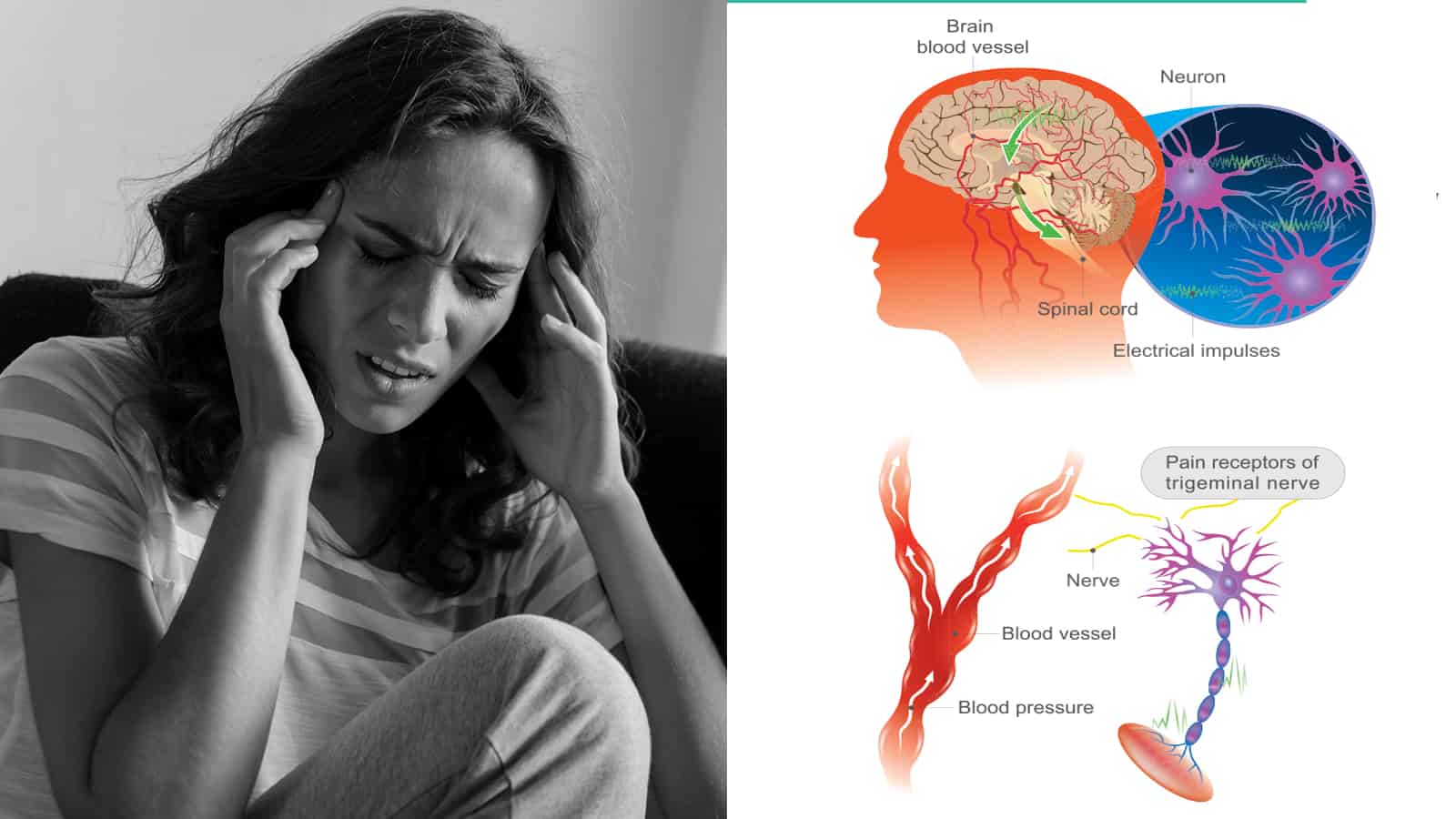Migraines are a huge problem for a lot of the population. The migraine pain that comes with it is often excruciating, and many people resort to medication as a method for managing that pain.
But what if there were supplementary treatments that could help reduce migraine pain? You may still need to use painkillers, but you might be able to rely on them much less. The secret lies in mindfulness!
Mindfulness is the act of being present in the current moment, accepting the situations you can’t control, and regulating your emotions, thoughts, and responses. It’s great for mental and physical health, and it may also be capable of relieving the pain from migraines! How? Here are five mindfulness tips to help reduce migraine pain immediately.
Meditative Practices to Reduce Migraine Pain
Mindfulness and meditation often get lumped together as one and the same, but they’re not definitions of each other. However, meditation is a common tool to further drive mindfulness. If you’re looking for a good way to handle migraine pain, this is a good place to start.
Studies have shown that mindfulness practices involving meditation can be useful as alternative migraine treatments. They also have lots of other benefits related to reducing inflammation, improving pain tolerance, reducing stress levels, and improving quality of life.
When you feel a migraine setting in, you can work to reduce that migraine pain by performing a few meditative practices. It’s hard to be mindful directly when you’re in pain, and meditation can be a good way to help the process. You can try one of the following methods:
1 – Rhythmic Breathing for Migraine Pain
This process is a common technique used for relaxation, and it can help you with your migraine pain. Start by entering a comfortable lying or sitting position. Loosen your muscles and any tight clothing, close your eyes, and get cozy. Once ready, breath in slowly through your nose. As you do this, count to six. Once you finish your six-count inhale, hold your breath for four counts. Then, exhale slowly to another count of six. Repeat the process for many minutes, focusing on your breathing the whole time. Don’t allow your brain to wander – focus only on your breathing and how air enters and exits your body and affects the rise and fall of your stomach.
2 – Do Guided Meditation to Decrease Migraine Pain
If you need some help with your meditation, try some gentle guided meditation. Mindfulness meditation apps and videos are easily available online for you to use, and they’re easy to follow and evocative for effectiveness. If you can’t listen to audio while experiencing migraine pain, it’s a good idea to get in the habit of regular guided meditation outside of migraines. That way, when you do have a migraine, you can immediately get into your normal meditation routine for mindfulness.
3 – Go For A Walk Could Lessen Migraine Pain
This might not be the best idea for those with severe migraine pain. But if you’re able to, a meditative walk – done in a safe location – can be a great way to get into mindfulness. Put on some comfortable shoes and find a good place to walk, preferably surrounded by nature. Start to walk and focus completely on your legs and feet and how they feel as you move. Pay close attention to each motion of your body and muscles. Take your time focusing on one group of muscles at a time, going from your feet up to your face. Of course, again, walking might not be feasible when you’re in the middle of a migraine. This is a practice better reserved for when you first start noticing migraine symptoms or when you’ve come out of the worst of a migraine.
4 – The C.A.R.E Technique and Migraine Pain
Miles for Migraine’s Executive Director, Shirley Kessel, spoke on a Facebook Live stream by the American Migraine Foundation about this. She explained that mindfulness gives people the ability to slow down so they can stop focusing on worries about the future and pain from the past.
Kessel stated that stress is one of the biggest triggers for migraines, accrediting over 70% of cases to this cause. Mindfulness can help to reduce the severity of migraine pain, as it allows you to stay in the present, free yourself from judgment, and acknowledge how you feel. You’ll be able to better regulate migraine-causing stress that way.
For this purpose, Kessel recommends using the C.A.R.E process. This mindfulness technique is described by her as follows:
C: Check-In
Start by focusing on yourself and asking yourself how you’re doing. You can also use the question “What is here right now?”. This gives you the chance to truly check in with yourself and determine how you’re feeling at that exact moment. This is a big first step to mindfulness. Be present and make sure you answer that question honestly! If you have trouble getting in touch with yourself, focus first on deep breathing, feeling each rise and fall of your chest. A lot of us naturally avoid acknowledging painful emotions because we don’t want to get lost in them. Take time to bring yourself to a state where you can consider your feelings and take inventory of yourself!
A: Allow
This step involves allowing the current moment to simply exist as is without trying to fix, solve, or change it. This even applies if you’re feeling something bad or painful. It’s tough, but it has to be done. This is an important part of learning proper acceptance without judgment. The sooner you stop judging yourself for how you feel, the better. And, of course, the sooner you learn to accept situations outside of your control, the less stress you will experience over them. There’s a lot of power in saying that you’re allowing these circumstances to simply exist as they are. The act of such detachment is incredible for migraines, migraine pain, and mental health.
R: Respond
Once you’ve checked in and allowed the situation to be as it is, you now need to respond to it. When the migraine pain has started to subside, consider what is currently needed and what you can do to improve your situation. Sometimes, this means simply distracting yourself from something that you can’t control and doing something to relax or unwind. At other times, this means taking a more direct approach. Since it’s stress we’re discussing, the right response might be to delegate tasks, ask for help, or organize your schedule. Or it might be to do a few stress-reducing exercises or de-stress with a relaxing night in!
E: Embody
If you want to really reduce migraine pain off the bat, you can’t leave out the final step of C.A.R.E, which is embodying mindfulness. To do this, you must focus on the question “what is enough?” or “how much is enough?”. This involves incorporating mindfulness into your everyday life and determining exactly how much of it that you need. Once you get into the habit of regularly putting mindfulness to work, this will come more naturally. Though you still may experience periodic migraines, you’ll have less migraine pain overall as you stay aware of the present, always.

5 – Daily Intention-Setting Can Reduce Migraine Pain
If you experience migraines and migraine pain almost daily, it may be time to incorporate mindfulness into your routine in a reliable way. Getting that mindfulness time first thing when you wake up can reduce the chance of a severe migraine later in the day. After all, research shows a reliable link between migraine relief and mindfulness.
Intention-setting is a great daily form of mindfulness and should be done when you wake up every morning. This connects you to your daily goals, personal state, and aligns your subconscious and conscious mind with each other. It also motivates you, so you’ll be more productive on top of being able to potentially better manage your migraines.
To perform daily-intention setting, follow these steps:
Step 1
Wake up and immediately begin. Don’t check your phone or emails. This is really best done as soon as you wake up for the first time that day. You can also do it if you need to reorient yourself after naps. Sit up, either in a chair or in your bed, staying comfortable. Feel the cushion beneath you and keep your back straight but relaxed. Close your eyes and draw awareness to yourself and the present with the first two steps of C.A.R.E.
Step 2
Breathe in and out deeply. Use the rhythmic breathing methods – six counts of inhalation, four counts of holding, and six counts of exhaling. Do this three to five times before allowing your breath to naturally settle into a pace that is most natural to you. Follow that natural instinct and stay aware of your body and how it moves with each breath.
Step 3
Once your breathing is regulated, ask yourself what you want to do today or what your intention for the day is. You can ask yourself general questions or opt for more focused inquiries. For example, “What quality do I want to develop?”, “How can I feel most fulfilled today?”, or “How can I best make my desired impact?” are great questions. You can even ask yourself multiple questions as long as you answer them honestly and don’t overwhelm yourself.
Step 4
Set your daily intention firmly. These intentions can be set with a positive and specific affirmation. For example, you might say “I will be confident at work today and trust in my capabilities.” Or you might say “I will remember my self-worth and value.” You can also string multiple things together, such as “Today, I will be kind to myself, eat well and nourish my body, persevere through challenges, and be tolerant of those around me.” Repeat the intention a couple of times so it sticks.
Step 5
Check-in regularly, following the C.A.R.E technique if desired, throughout the day. When you feel migraines begin to surface, draw your attention to your daily intentions and you might just notice that the migraine pain slowly ebbs away.
Final Thoughts On Some Ways To Reduce Migraine Pain Immediately
Migraine pain is no joke, but mindfulness may be able to help reduce its severity. Tips such as using meditative practices, the C.A.R.E technique, and daily intention-setting can help facilitate those beneficial results.




















